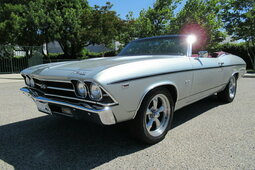When the Renault AE or Magnum, as it’s known more commonly, first hit the roads in 1990, it was nothing short of a revolution. A truck that looked unlike anything else at the time, with its flowing cab, angular styling, flat floor, and driver-focused design. Designed by the legendary Marcello Gandini, it was the European truck of the future, soon followed by the likes of Volvo, Scania and Mercedes. And despite all of the achievements, it certainly wasn’t for everyone.
A Radical Idea
The story of the Magnum begins in the late 1970s, when Renault Véhicules Industriels (RVI) was looking to develop a next-generation heavy-duty truck. At the time, Renault had already absorbed Berliet and Saviem, two of France’s most important truck manufacturers, and was in the process of consolidating its lineup. The Berliet KB series, which had been introduced in 1970, was still in production, but Renault knew it was time for something new. By 1980, Renault’s design chief Robert Opron had laid out a vision for the future. Two different approaches were considered: a modular truck with separate components and an integrated cab structure that focused on aerodynamics and driver comfort. Renault’s engineers, unfortunately, struggled to make a final decision.
Enter Marcello Gandini
In 1980, frustrated by the delays, Renault turned to Marcello Gandini, the Italian designer behind cars like the Lamborghini Countach and the Citroën BX. Gandini had never designed a truck before, but his fresh thinking was exactly what Renault needed. He quickly refined Renault’s concepts and developed two completely new cab prototypes. One of then was later built at Berliet’s former factory in Lyon.
Gandini’s design was unlike anything seen before in the trucking world. The cab was massive, shaped like a box and tall, featuring huge, flat surfaces, a nearly vertical windshield, and stacked main lights. Most importantly, it was designed with the driver in mind. The cab sat completely separate from the chassis, fully air-suspended for a smoother ride. Inside, the completely flat floor created a before unseen amount of space, making it feel more like a small apartment than a truck cabin.
Renault built two prototypes – one based on Opron’s integrated design and the other on Gandini’s modular vision. In 1982, both were tested, going head-to-head with trucks from DAF, Scania, Volvo, and Ford. Gandini’s concept won.
The Aero Renault
In 1990, Renault finally launched the truck as the Renault AE (Aérodynamique Européenne). It was unlike anything else on the market. The cab sat entirely separate from the engine compartment, a first in modern truck design, which improved both comfort and maintenance access. The flat floor gave the driver unmatched freedom of movement and the cabin itself was spacious, standing 1.87 meters tall (later increased to over 2 meters). The seating position was extremely high, almost like that of an inter-city bus. At launch, the AE was offered with two engine options: the AE 380 with 6-cylinder turbo diesel and 374 horsepower, and the AE 500, equipped with a 503 horsepower Mack V8, since Mack was owned by Renault. Due to all of the AE’s accolades and innovations, there was no surprise when it was awarded International Truck of the Year in 1991.
Becoming The Magnum
By the mid-1990s, Renault saw that the innovative AE was becoming a bit old. They started preparing it for a major refresh. The name change to Magnum officially happened in 1997, marking a new chapter for the truck. New driveline, updated styling and a more conventional interior made the truck fresh for the 90s and early 2000s.
Renault continued refining the Magnum, giving it a more major facelift in 2001 under the guidance of designer Xavier Allard. The truck retained its boxy look, but the cabin was reworked for improved aerodynamics and driver comfort. The Renault still remained true to Gandini’s original vision, being a spacious and comfortable truck, towering it’s old fashioned competitors for long-haul operators.
The Magnum's Strengths and Controversies
The Magnum was a truck that people either loved or hated. For those who loved it, it was the ultimate driver's truck. The air-suspended cab, mounted on four airbags, provided brilliant ride quality, while the high seating position and huge panoramic windshield gave drivers an excellent view of the road. The flat floor and walk-through design made it feel almost like a small living space.
But it wasn’t without its quirks. Some drivers complained that the air suspension made the cab feel too soft, leading to a floating sensation, especially in high winds. Others found the tall cab design impractical in tight spaces. And, of course, the looks were polarizing – you either found it futuristic and commanding, or just plain ugly.
The End of an Era
Despite its iconic status, the Magnum's days were numbered. The truck industry was moving towards more integrated, aerodynamic designs, and Renault needed to modernize its lineup. On June 26, 2013, the final Renault Magnum was delivered to the French transport company Robert Chabbert. After 23 years of production, 129,021 Magnums had been built.
And even though production ended and the Magnum was replaced by the Renault T-series, the Magnum lives on as a truck that pioneered the concept of spacious, high-cab designs, and the notion, that a plain old truck can be an interesting and artful object, doesn’t matter if you drive a truck or not. It represented a new way of thinking about trucks, putting the driver at the centre of the experience. It was a truck that turned heads and that’s something that doesn’t happen too often.
---
Embark on a journey to find your ideal vehicle by browsing through our Car Categories. Or, delve into our Classic Passion Shop for an exciting array of products from our partners, perfect for enthusiasts looking to enhance their collection!

















